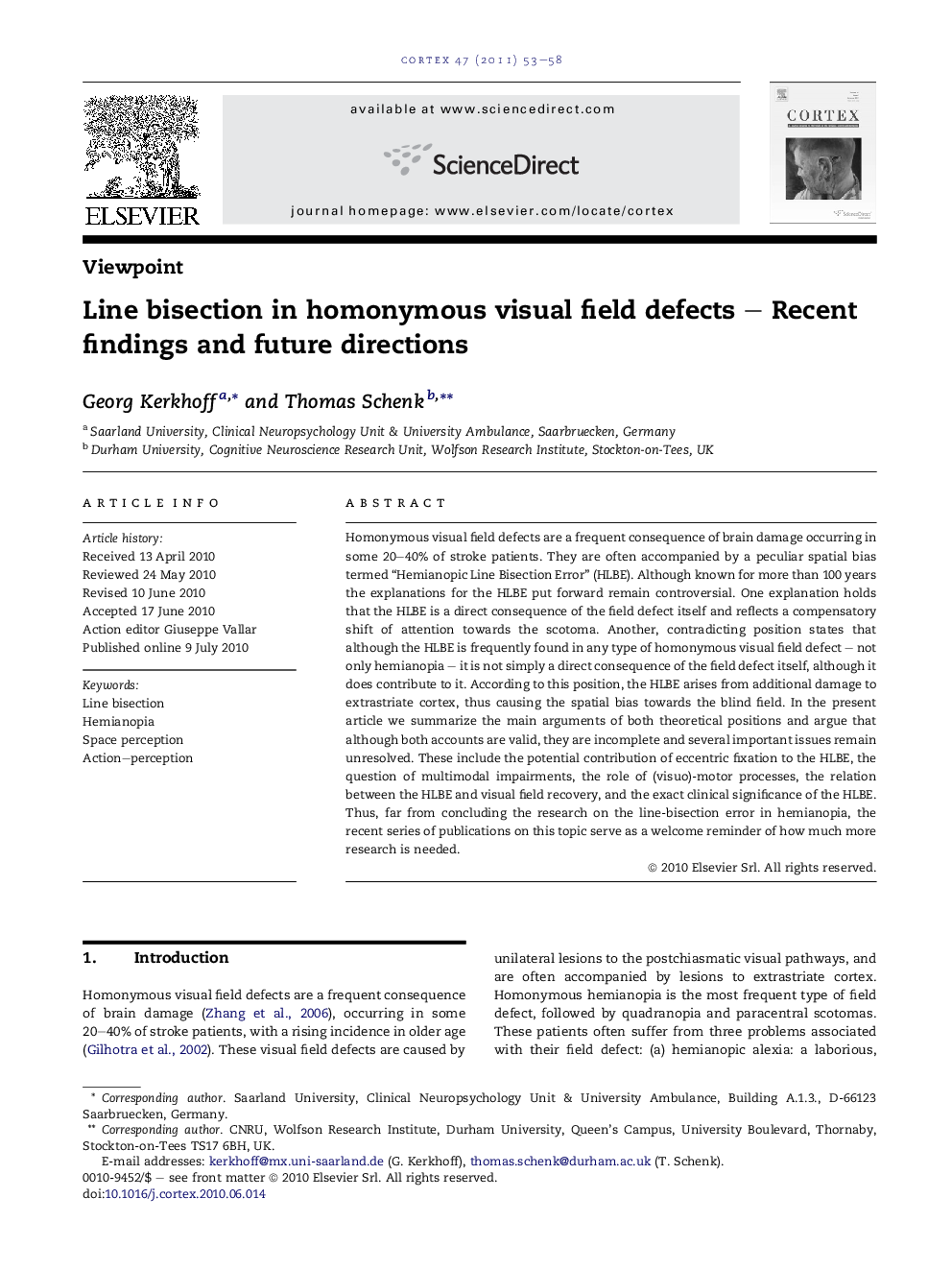| کد مقاله | کد نشریه | سال انتشار | مقاله انگلیسی | نسخه تمام متن |
|---|---|---|---|---|
| 942315 | 925123 | 2011 | 6 صفحه PDF | دانلود رایگان |

Homonymous visual field defects are a frequent consequence of brain damage occurring in some 20–40% of stroke patients. They are often accompanied by a peculiar spatial bias termed “Hemianopic Line Bisection Error” (HLBE). Although known for more than 100 years the explanations for the HLBE put forward remain controversial. One explanation holds that the HLBE is a direct consequence of the field defect itself and reflects a compensatory shift of attention towards the scotoma. Another, contradicting position states that although the HLBE is frequently found in any type of homonymous visual field defect – not only hemianopia – it is not simply a direct consequence of the field defect itself, although it does contribute to it. According to this position, the HLBE arises from additional damage to extrastriate cortex, thus causing the spatial bias towards the blind field. In the present article we summarize the main arguments of both theoretical positions and argue that although both accounts are valid, they are incomplete and several important issues remain unresolved. These include the potential contribution of eccentric fixation to the HLBE, the question of multimodal impairments, the role of (visuo)-motor processes, the relation between the HLBE and visual field recovery, and the exact clinical significance of the HLBE. Thus, far from concluding the research on the line-bisection error in hemianopia, the recent series of publications on this topic serve as a welcome reminder of how much more research is needed.
Journal: Cortex - Volume 47, Issue 1, January 2011, Pages 53–58